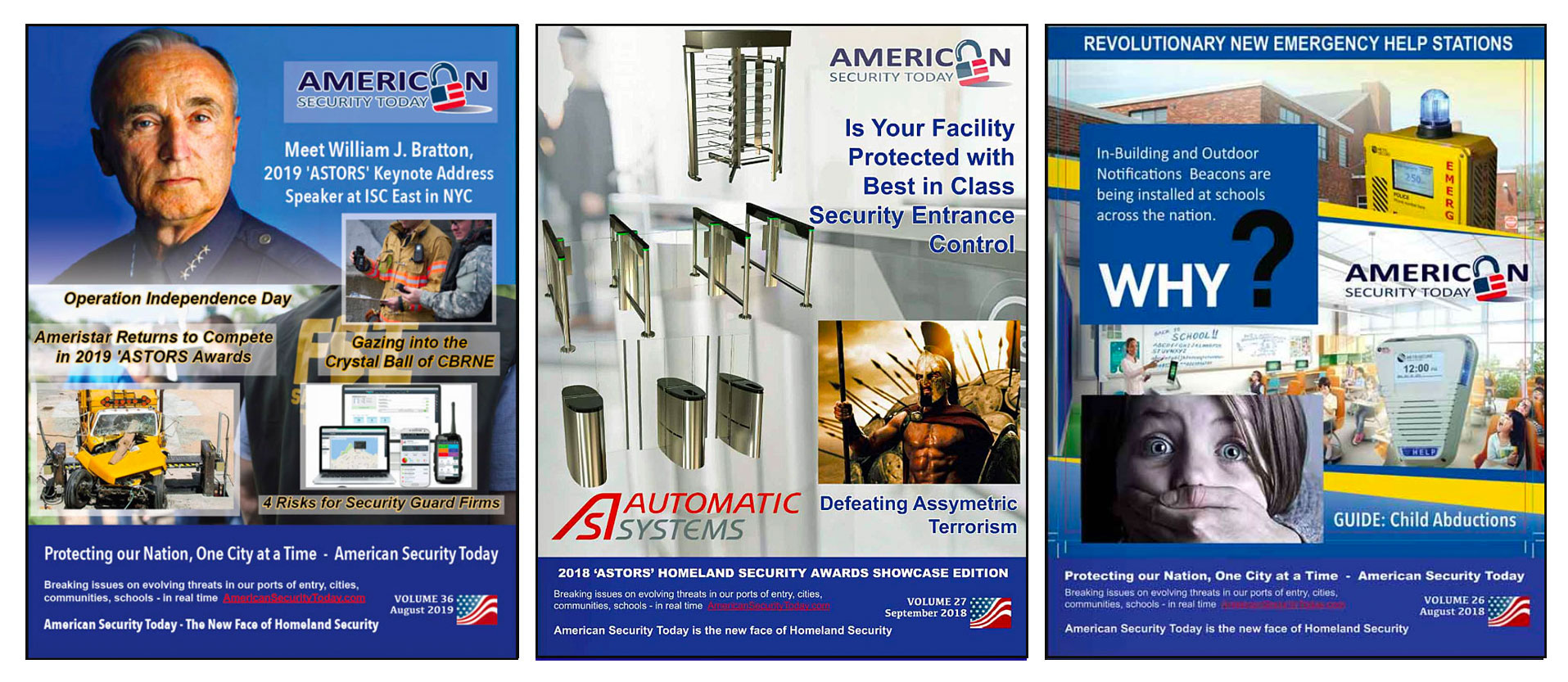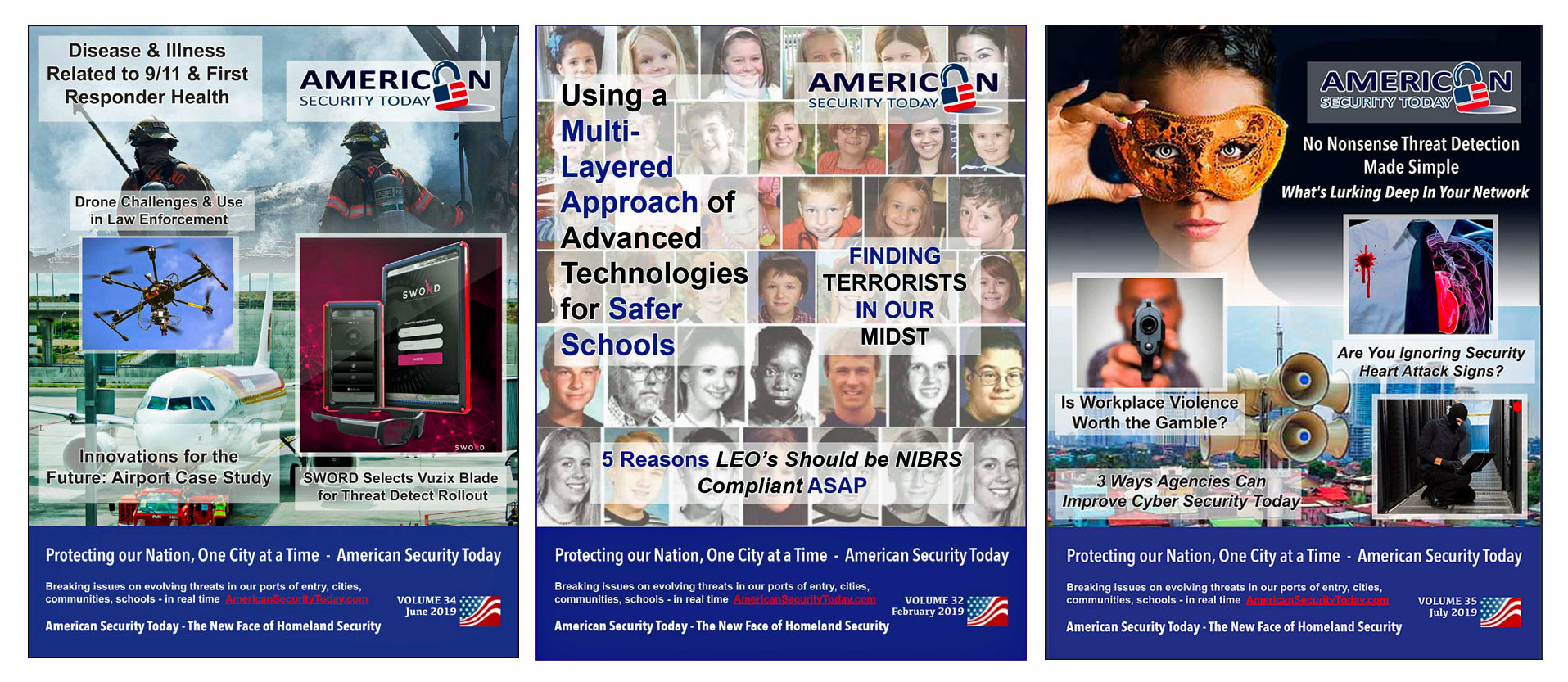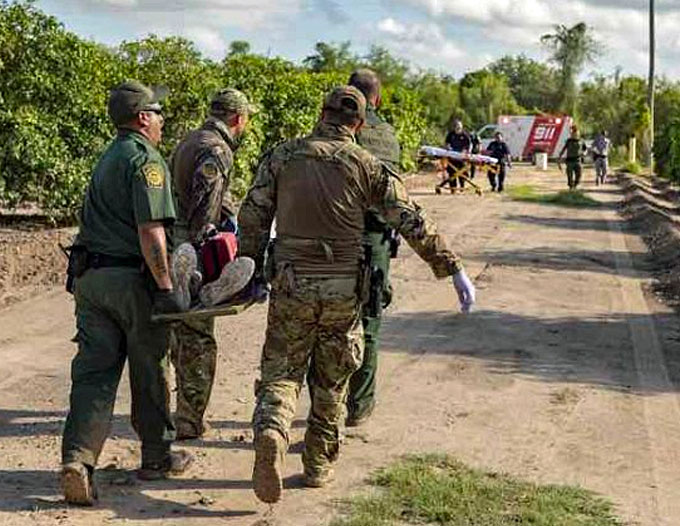
Each day, undocumented immigrants attempt to enter the United States between the ports of entry, most specifically at our southwest border, and often face life-threatening circumstances.
Miles away from shelter, food, and water; they are exposed to harsh terrain and drastic changes in temperature; and lack the means to receive help if they need it.
When faced with these adversities, undocumented immigrants have a high risk of becoming disoriented, dehydrated, and succumbing to the harsh environment before they can reach help.
 In an effort to more effectively monitor immigrant activity and provide life-saving aid as needed, U.S. Customs and Border Protection (CBP) Data Science Division (DSD) and Enterprise Data Analytics Office recently collaborated with the Department of Homeland Security (DHS) Science and Technology Directorate (S&T), which was honored in the 2019 ‘ASTORS’ Awards Program, to implement the Missing Migrants Program.
In an effort to more effectively monitor immigrant activity and provide life-saving aid as needed, U.S. Customs and Border Protection (CBP) Data Science Division (DSD) and Enterprise Data Analytics Office recently collaborated with the Department of Homeland Security (DHS) Science and Technology Directorate (S&T), which was honored in the 2019 ‘ASTORS’ Awards Program, to implement the Missing Migrants Program.
“The primary objective of the Missing Migrants Program is to improve our ability to save the lives of migrants that are attempting to enter the U.S. between the ports of entry at our southwest border or circumvent our immigration checkpoints,” explains DHS S&T Program Manager Lorraine Castillo.
To help notify U.S. Border Patrol when undocumented immigrants are in distress and provide a general location of where they may be, CBP has placed rescue beacons and 911 rescue placards throughout parts of the southwest border, specifically the Rio Grande Valley, which is frequently traveled by immigrants and has posed a threat to them in the past.
The rescue beacons, when utilized or directly activated by a distressed subject, contacts CBP and notifies Border Patrol Agents that there is an emergency in the immediate area.
The informational placards provide migrants with emergency contact information in English and Spanish they can use to contact emergency management services (e.g. 911) as needed.
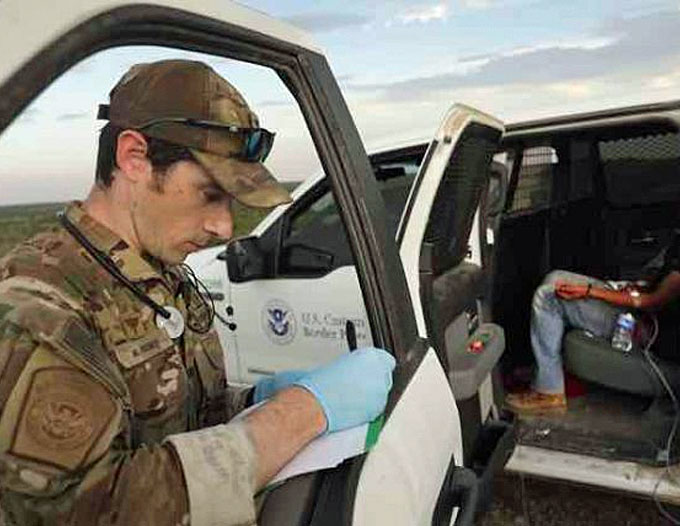
They also provide a general location which Border Patrol Agents can use to begin their search for the distressed immigrants, if necessary.
“The rescue beacons and 911 rescue placards are useful tools for anyone who may be in distress in the border area, and for the CBP Border Patrol Agents who respond to calls for assistance,” added CBP Program Advisor Derek McVay.
“However, to ensure maximum effectiveness and accessibility, they need to be strategically placed, ideally on accessible terrain and within range of cellular reception.”
“Cell signals are the way that we are able to triangulate the locations of migrants and initiate rescues.”
“Our 911 rescue placards are our simplest and most accessible rescue aid.”
“They can be put almost anywhere and utilized by migrants who need them. As long as they have access to both a cell phone and cellular reception, they will be able to call 911 for help.”
“For migrants who may not have access to a cellphone, we have our rescue beacons.”
“These are similar to the emergency blue lights that you see on college campuses, and serve as a ‘save me’ button.”
“When they push the button on one of our rescue beacons, it automatically sends out a 911 distress signal to law enforcement, which is then routed to our Border Patrol Agents to notify them that a rescue is needed.”
(With the influx of the caravans to the Rio Grande Valley (RGV) in Texas, there has been a significant increase in the number of 9-1-1 calls for migrant rescues. To provide location assistance to the migrants calling for assistance, the U.S. Border Patrol (USBP) launched a program called Missing Migrant Location Marker which strategically places dozens of uniquely numbered placards around the RGV Sector. Unfortunately, RGV Sector had no way to connect the calls for service with the placards, no way to inform agents of the migrants location and no way to analyze the calls for service to improve the placard placement locations. To resolve these issues, they turned to the USBP Data Sciences Division (DSD). With the direct support of USBP DSD as well as assistance from the USBP Special Operations Group, USBP HQ GIS and the RGV Sector Intelligence Unit, DSD was able to create a set of enterprise applications within the CBP eGIS Portal to support this critical life-saving humanitarian mission. This session will discuss how this collaborative team achieved such ground breaking operational success in under three months. Courtesy of ESRI Events and YouTube. Posted on Aug 8, 2019.)
However, the rescue beacons and 911 rescue placards do have some shortcomings.
“Our rescue beacons and placards are reliant upon the availability of cellular services and associated infrastructure,” explained Patrick Trulock, CBP Director of Enterprise Services.
“And some parts of the southwest border simply do not have cellular reception.”
“So, if we are not thoughtful about where we place our rescue beacons and placards, we can render them ineffective.”
“Physical terrain also serves as a big challenge when considering where to put these tools,” Trulock continued.
“If they aren’t accessible to migrants, they are useless.”
 To address these concerns, S&T’s Missing Migrant Program has developed and piloted two key tools in the Rio Grande Valley sector beginning in April and running through August 2019:
To address these concerns, S&T’s Missing Migrant Program has developed and piloted two key tools in the Rio Grande Valley sector beginning in April and running through August 2019:
-
An interactive dashboard that enhances CBP’s ability to display and interact with geospatial data and models to help them strategically install additional rescue beacons and 911 rescue placards, and
-
An analysis playbook that supports the development of similar dashboards in other sectors of the southwest border.
The dashboard works by identifying, collecting, and importing CBP DSD sector-specific geospatial data sets (both historical and current) into ArcGIS Portal, thus enabling Border Patrol Agents to quickly access information related to:
Geography:
-
e.g., elevation, types of terrain, visibility of the terrain, types of vegetation, flood zones;
Land use:
-
Locations and accessibility of water and water sources;
-
current 911 rescue placards and beacons;
-
cellular towers;
-
CBP facilities and other relevant structures; property lines, gates, restricted areas that may impact response routes and times; roads and trails;
Seasonal conditions
-
e.g., weather, temperature, rainfall; and
Routes frequented by migrants
-
e.g., popular travel routes, routes where rescues tend to take place, routes where apprehensions have taken place, and routes where migrants have died in the past, along with dates and times of encounters.
The playbook serves as a user guide that provides a workflow of repeatable processes, methodologies, and data dictionary to other sectors that may want to implement a dashboard similar to the one that was piloted in the Rio Grande Valley sector of the southwest border.
Both the dashboard and playbook were successfully piloted and then transitioned to CBP in October 2019.
(Learn More. U.S. Border Patrol Expanding Missing Migrant Program. Courtesy of KVEO and YouTube. Posted on Jul 18, 2018.)
“Our initial pilot of the dashboard and playbook in the Rio Grande Valley proved to be very successful,” said Castillo.
“By giving CBP improved capabilities to see and interact with geospatial data from this sector, they have been able to more effectively model the landscape and make better decisions related to locations and deployments of rescue beacons and placards.”
“So far, we’ve been able to ensure that our new 911 rescue placards are being placed within walking distance of cellular reception, beacons are being placed within immediate range of cellular reception, and that both of these rescue tools are being placed in physically accessible terrain that is frequented by migrants.”
“We’re excited about the possibilities that the dashboard and playbook have made available to us,” said McVay.
“Our long-term goal is to finesse these tools to the point where they can be universally implemented and be efficient enough to be used in real-time when agents are conducting rescue responses in the field.”
Since the pilot of the dashboard and playbook ended in October 2019, the Missing Migrant Program has:
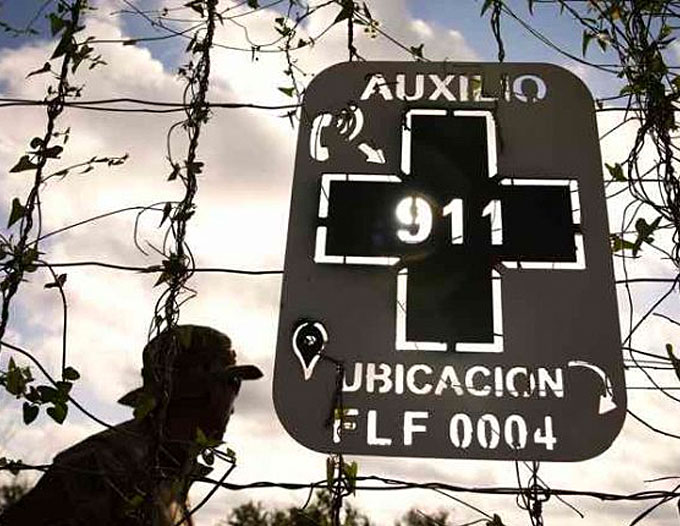
-
Started production on an additional 40 rescue beacons and over 500 911 rescue placards;
-
Received over $1 million in funding and executed the purchase of rescue infrastructure for nine other southwest border sectors; and
-
Begun rolling out the dashboard and playbook to other sectors of the southwest border so that Border Patrol Agents in these sectors can plan for the future placement of rescue beacons and placards in their regions.
For fiscal year 2020, the Missing Migrant Program has received an additional $3 million to enhance rescue efforts for nine other southwest border sectors.
They have also partnered with five major electrical companies and gas companies in South Texas to gain access to over 22,000 electrical and gas infrastructure landmarks (e.g.., electric pole lines, transformers, and gas pipelines), expand CBP’s ability to identify landmarks through GPS coordinates, and enhance their ability to place beacons and 911 rescue placards more accurately.
United States Border Patrol Honored in 2019 ‘ASTORS’ Awards Program
United States Border Patrol
-
-
Excellence in Homeland Security
-
Border Patrol, Search, Trauma and Rescue (BORSTAR)
-
The Border Patrol, Search, Trauma and Rescue (BORSTAR) Unit is a specialized unit of the United States Border Patrol trained in emergency search and rescue & primarily assists injured or stranded migrants who enter the United States illegally from Mexico at remote desert locations.
-
(John Welter, a Border Patrol agent in the San Diego sector, explains how a little-known team called the Border Patrol Search, Trauma, and Rescue Unit, or BORSTAR, has largely gone under the radar. Courtesy of The Daily Signal and YouTube.)
Enter today to Compete in the 2020 ‘ASTORS’ Homeland SecurityAwards at https://americansecuritytoday.com/ast-awards/.
The Annual ‘ASTORS’ Awards Program is specifically designed to honor distinguished government and vendor solutions that deliver enhanced value, benefit and intelligence to end users in a variety of government, homeland security and public safety vertical markets.

The Annual ‘ASTORS’ Awards is the preeminent U.S. Homeland Security Awards Program highlighting the most cutting-edge and forward-thinking security solutions coming onto the market today, to ensure our readers have the information they need to stay ahead of the competition, and keep our Nation safe – one facility, street, and city at a time.
American Security Today is pleased to announce that Deann Criswell, the NYC Emergency Management Commissioner will deliver the keynote address at the 2020 ‘ASTORS’ Awards Presentation Luncheon Banquet in New York City.
Nominations are now being accepted for the 2020 ‘ASTORS’ Homeland Security Awards at https://americansecuritytoday.com/ast-awards/.
90% of ‘ASTORS’ Award Winners return to compete in the Annual ‘ASTORS‘ Homeland Security Awards Program, and 100% of ‘ASTORS’ Sponsors have returned year to year to reap the benefits of their participation in the industry’s largest and most comprehensive Annual Awards Program.
Comprehensive List of Categories Include:
| Access Control/ Identification | Personal/Protective Equipment | Law Enforcement Counter Terrorism |
| Perimeter Barrier/ Deterrent System | Interagency Interdiction Operation | Cloud Computing/Storage Solution |
| Facial/IRIS Recognition | Body Worn Video Product | Cyber Security |
| Video Surveillance/VMS | Mobile Technology | Anti-Malware |
| Audio Analytics | Disaster Preparedness | ID Management |
| Thermal/Infrared Camera | Mass Notification System | Fire & Safety |
| Metal/Weapon Detection | Rescue Operations | Critical Infrastructure |
| License Plate Recognition | Detection Products | And Many Others! |
Don’t see a Direct Hit for your Product, Agency or Organization?

With the unprecedented occurrence of the COVID-19 pandemic, the focus of the safety and security industries has realized the need to increase innovations to address the daily growing challenges.
As such AST aims to make sure these firms and professionals are reflected in the 2020 ‘ASTORS’ Awards Program, so we’d like to encourage you to submit appropriate categories recommendations and include COVID-19 Frontline Professionals in your Nominations to see that these Professionals, Facilities, and Vendors receive the Recognition they Deserve!
Submit your category recommendation for consideration to Michael Madsen, AST Publisher at: mmadsen@americansecuritytoday.com.
The 2019 ‘ASTORS’ Awards Program surpassed expectations with a record number of nominations received from industry leaders and government agencies, and drew over 200 attendees to the ‘ASTORS’ Awards Presentation Banquet – an exclusive gourmet luncheon and networking opportunity which filled to capacity, before having to turn away late registrants.

The event featured an impassioned and compelling keynote address by William J. Bratton, former police commissioner of the New York Police Department (NYPD) twice, the Boston Police Department (BPD), and former chief of the Los Angeles Police Department (LAPD), as he walked attendees through 50 years of American policing history, the impacts on the communities, and the evolution of critical communication capabilities in our post 9/11 landscape.
Commissioner Bratton, one of the world’s most respected and trusted experts on risk and security issues and Executive Chairman of Teneo Risk a global advisory firm, was recognized as the ‘2019 ‘ASTORS’ Person of the Year’ for his Lifetime of Dedication and Extraordinary Leadership in Homeland Security and Public Safety.
The 2019 ‘ASTORS’ Awards Program was sponsored by ATI Systems, Attivo Networks, Automatic Systems, Desktop Alert, and SWORD Technologies, every one a returning Sponsor from 2018.
Why the ‘ASTORS’ Homeland Security Awards Program?

American Security Today’s comprehensive Annual Homeland Security Awards Program is organized to recognize the most distinguished vendors of physical, IT, port security, law enforcement, and first responders, in acknowledgment of their outstanding efforts to ‘Keep our Nation Secure, One City at a Time.’
Over 200 distinguished guests representing Federal, State and Local Governments, and Industry Leading Corporate Firms, gathered from across North America, Europe and the Middle East to be honored among their peers in their respective fields which included:
- The Drug Enforcement Administration (DEA)
- National Center for Missing and Exploited Children (NCMEC)
- United States Marine Corps
- The Federal Protective Service (FPS)
- Argonne National Laboratory (ANL)
- United States Postal Inspection Service
- DHS S&T
- United States Marshals Service (USMS)
- The Port Authority of New York & New Jersey Police (PAPD)
- The Department of Justice (DOJ)
- The New York State Division of Homeland Security & Emergency Services (NYS DHSES)
- United States Border Patrol
- AlertMedia, Ameristar Perimeter Security, Attivo Networks, Automatic Systems, Bellevue University, BriefCam, Canon U.S.A., CornellCookson, Drone Aviation, FLIR Systems, Hanwha Techwin, HID Global, IPVideo Corp., Konica Minolta Business Solutions, LenelS2, ManTech, Regroup Mass Notifications, SafeLogic, SolarWinds, Senstar, ShotSpotter, Smiths Detection, TCOM LP, Trackforce, Verint, and More!
From innovative Military Cyber Programs, to Local, State and Federal Public Safety and Emergency Management Initiatives, New Physical and IT Products and Services, and Security Professional, Threat Assessment, Emergency Preparedness, Law Enforcement and Homeland Security Education and Training Opportunities – Join your ‘ASTORS’ Award-Winning Peers and Receive the Recognition You Deserve!
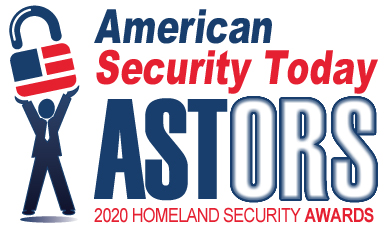 Excellence in Public Safety and Government Security Award Nominations are also being accepted, such as 2019 Honored Winners which includes the DEA, U.S. Marine Corps, DHS S&T, Federal Protective Service, DHS S&T NUSTL, U.S. Marshals Service, U.S. Border Patrol, The Port Authority of NY/NJ, and the NYS Division of Homeland Security & Emergency Services.
Excellence in Public Safety and Government Security Award Nominations are also being accepted, such as 2019 Honored Winners which includes the DEA, U.S. Marine Corps, DHS S&T, Federal Protective Service, DHS S&T NUSTL, U.S. Marshals Service, U.S. Border Patrol, The Port Authority of NY/NJ, and the NYS Division of Homeland Security & Emergency Services.
Individuals are also encouraged to be nominated for Government Excellence in Public Safety and Homeland Security such as last years widely respected recipients.
Why American Security Today?
The traditional security marketplace has long been covered by a host of publications putting forward the old school basics to what is Today – a fast changing security landscape.
The traditional security marketplace has long been covered by a host of publications putting forward the old school basics to what is Today – a fast changing security landscape.
American Security Today is uniquely focused on the broader Homeland Security & Public Safety marketplace with over 75,000 readers at the Federal, State and local levels of government as well as firms allied to government.
American Security Today brings forward a fresh compelling look and read with our customized digital publications that hold readers eyes throughout the story with cutting edge editorial that provides solutions to their challenges.
Harness the Power of the Web – with our 100% Mobile Friendly Publications

The AST Digital Publications is distributed to over 75,000 qualified government and homeland security professionals in federal, state and local levels.
‘PROTECTING OUR NATION, ONE CITY AT A TIME’
AST Reaches both Private & Public Experts, essential to meeting these new challenges.
Today’s new generation of public safety and security experts need real-time knowledge to deal with domestic and international terrorism, lone wolf attacks, unprecedented urban violence, shifts in society, culture and media bias – making it increasingly difficult for Homeland Security, Law Enforcement, First Responders, Military and Private Security Professionals to implement coordinated security measures to ensure national security and improve public safety.
These experts are from Government at the federal, state and local level as well as from private firms allied to government.
AST provides a full plate of topics in our AST Monthly Magazine Editions, AST Website and AST Daily News Alerts, covering 23 Vital Sectors such as Access Control, Perimeter Protection, Video Surveillance/Analytics, Airport Security, Border Security, CBRNE Detection, Border Security, Ports, Cybersecurity, Networking Security, Encryption, Law Enforcement, First Responders, Campus Security, Security Services, Corporate Facilities, and Emergency Response among others.
AST has Expanded readership into integral Critical Infrastructure audiences such as Protection of Nuclear Facilities, Water Plants & Dams, Bridges & Tunnels, and other potential targets of terrorism.
Other areas of concern include Transportation Hubs, Public Assemblies, Government Facilities, Sporting & Concert Stadiums, our Nation’s Schools & Universities, and Commercial Business Destinations – all enticing targets due to the large number of persons and resources clustered together.
To learn more about the 2019 ‘ASTORS’ Homeland Security Award Winners solutions, please go to the 2019 ‘ASTORS’ Championship Edition Fully Interactive Magazine – the Best Products of 2019 ‘A Year in Review’.
The ‘ASTORS’ Champion Edition is published annually and includes a review of the ‘ASTORS’ Award Winning products and programs, highlighting key details on many of the winning firms products and services, includes video interviews and more.
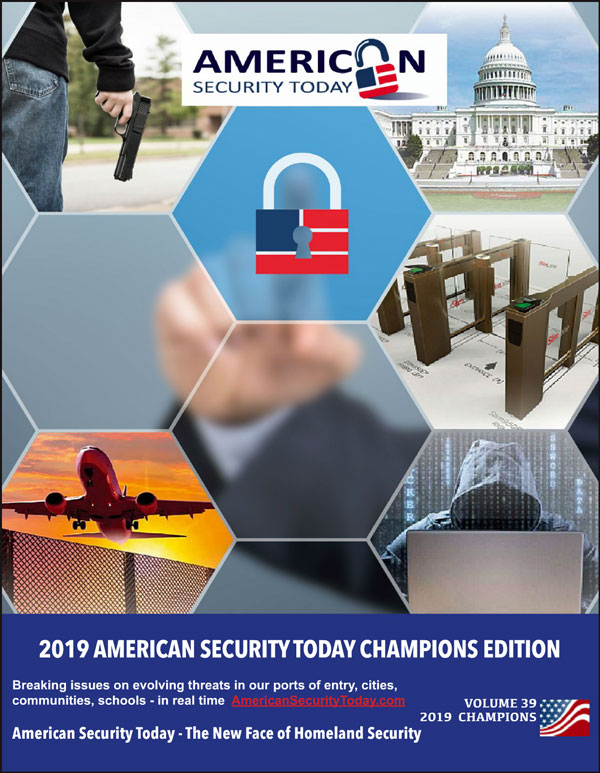 It is your Go-To source throughout the year for ‘The Best of 2019 Products and Services‘ endorsed by American Security Today, and can satisfy your agency’s and organization’s most pressing Homeland Security and Public Safety needs.
It is your Go-To source throughout the year for ‘The Best of 2019 Products and Services‘ endorsed by American Security Today, and can satisfy your agency’s and organization’s most pressing Homeland Security and Public Safety needs.
From Physical Security (Access Control, Critical Infrastructure, Perimeter Protection and Video Surveillance Cameras and Video Management Systems), to IT Security (Cybersecurity, Encryption, Data Storage, Anti-Malware and Networking Security – Just to name a few), the 2019 ‘ASTORS’ CHAMPIONS EDITION will have what you need to Detect, Delay, Respond to, and Mitgate today’s real-time threats in our constantly evolving security landscape.
It also includes featured guest editorial pieces from some of the security industry’s most respected leaders, and recognized firms in the 2019 ‘ASTORS’ Awards Program.
DHS S&T Honored for Fourth Year in Annual ‘ASTORS’ Excellence in Government Awards
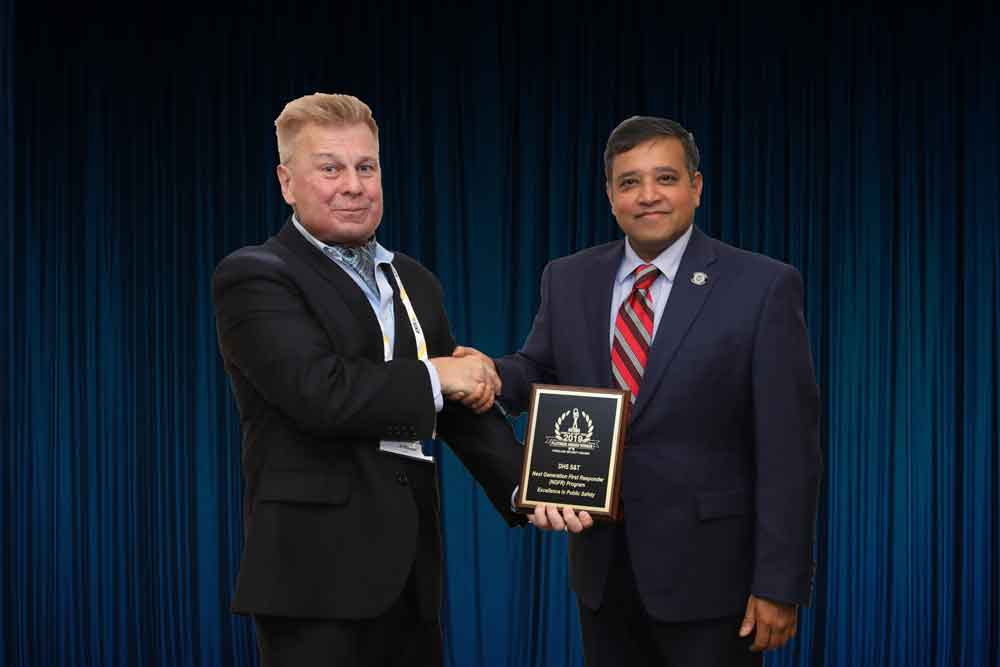
Department of Homeland Security (DHS) Science and Technology (S&T) Directorate
-
-
Excellence in Public Safety
-
Next Generation First Responder (NGFR) Program
-
The Next Generation First Responder (NGFR) Program works with first responders across the country to ensure the technology they use while responding to an emergency keeps them better protected, connected and fully aware.
-

DHS S&T National Urban Security Technology Laboratory (NUSTL)
-
Excellence in Public Safety
-
Responder RAD Preparedness
-
Responder RAD Preparedness – DHS Science and Technology Directorate, National Urban Security Technology Laboratory, in partnership with FEMA & the Department of Energy, & National Nuclear Security Administration (NNSA) provides guidance and exercises for first responders and emergency managers on how to plan for the first minutes of an radiological dispersal device, or “dirty bomb,” detonation.

DHS S&T Office of Mission and Capability Support
-
Excellence in Public Safety
-
The FOVEA (Forensic Video Exploitation and Analysis) Tool Suite
-
The FOVEA (Forensic Video Exploitation and Analysis) Tool Suite is an add-on suite of analytic tools for the forensic review of video in large-scale surveillance systems, developed by MIT Lincoln Laboratory under the DHS S&T Office of Mission and Capability Support (MCS) Surface Transportation Explosive Threat Detection (STETD) Program for Complex investigations.
For information about advertising opportunities with American Security Today, please contact Michael Madsen, AST Publisher at mmadsen@americansecuritytoday.com.
AST strives to meet a 3 STAR trustworthiness rating, based on the following criteria:
- Provides named sources
- Reported by more than one notable outlet
- Includes supporting video, direct statements, or photos
Subscribe to the AST Daily News Alert Here.

















